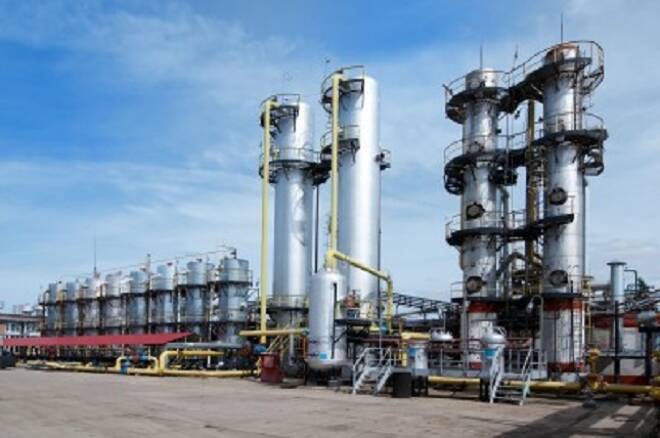Advertisement
Advertisement
Natural Gas Price Prediction – Price Rise Ahead of Inventory Release
By:
Natural gas prices jumped in the last hour of trade, following news that European Commission President Jean-Claude Juncker made some concessions which
Natural gas prices jumped in the last hour of trade, following news that European Commission President Jean-Claude Juncker made some concessions which could include purchasing natural gas directly from the United States. n which trade tensions between the U.S. and the European bloc are expected to dominate. With end of injection season natural gas storage inventories forecast to be the lowest since 2008, prices are beginning to rebound. Cooler than normal weather is forecast to cover most of the United States for the next 8-14 days, which somewhat countered the bullish news. Traders now await the Department of Energy’s inventory report scheduled for Thursday. Expectations are for a 40 Bcf decline with a range from 29 Bcf to 66 Bcf.
Technicals
Prices rebounded recapturing the 10-day moving average which was former resistance now support at 2.75. Target support is seen near the 50-day moving average at 2.88. Momentum has turned positive as the MACD (moving average convergence divergence) index generated a crossover buy signal. This occurs as the MACD line (the 12-day moving average minus the 26-day moving average) crosses above the MACD signal line (the 9-day moving average of the MACD line).
The U.S. Energy Information Administration’s in their Short-Term Energy Outlook forecasts working natural gas inventories on October 31 will be 3,470 billion cubic feet 365 Bcf which is 10% lower than the five-year average and 346 Bcf and 9% lower than last year’s level. This forecast inventory level would be the lowest end-of-October storage level since 2008, when inventories ended the month at 3,412 Bcf. The natural gas storage refill season is traditionally April 1 through October 31, when natural gas is typically put into underground storage facilities to prepare for increased winter demand for space heating, particularly in the residential and commercial sectors although injections into storage often occur in the first few weeks of November.
About the Author
David Beckerauthor
David Becker focuses his attention on various consulting and portfolio management activities at Fortuity LLC, where he currently provides oversight for a multimillion-dollar portfolio consisting of commodities, debt, equities, real estate, and more.
Advertisement
